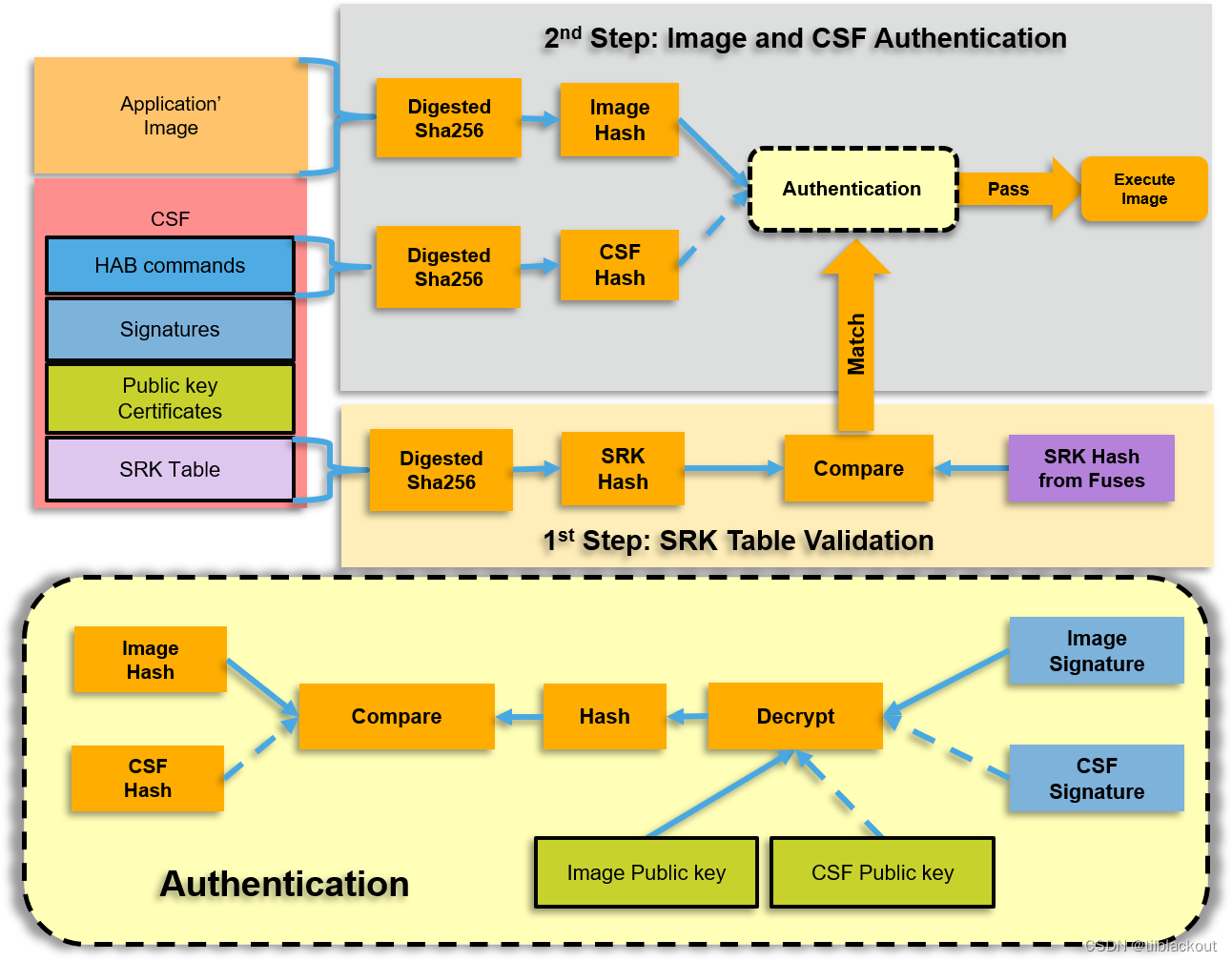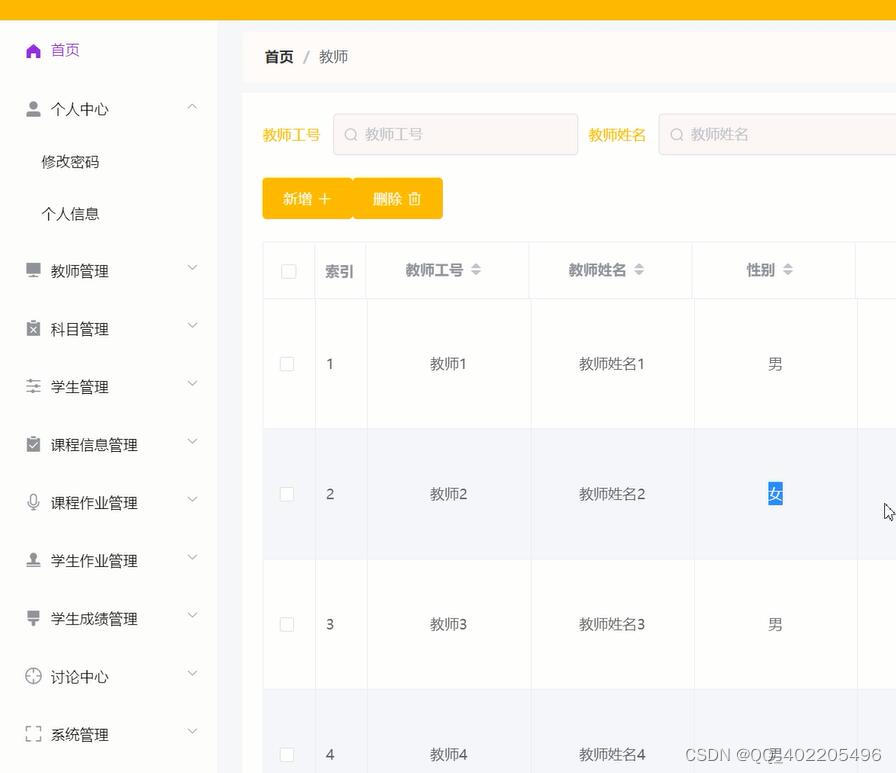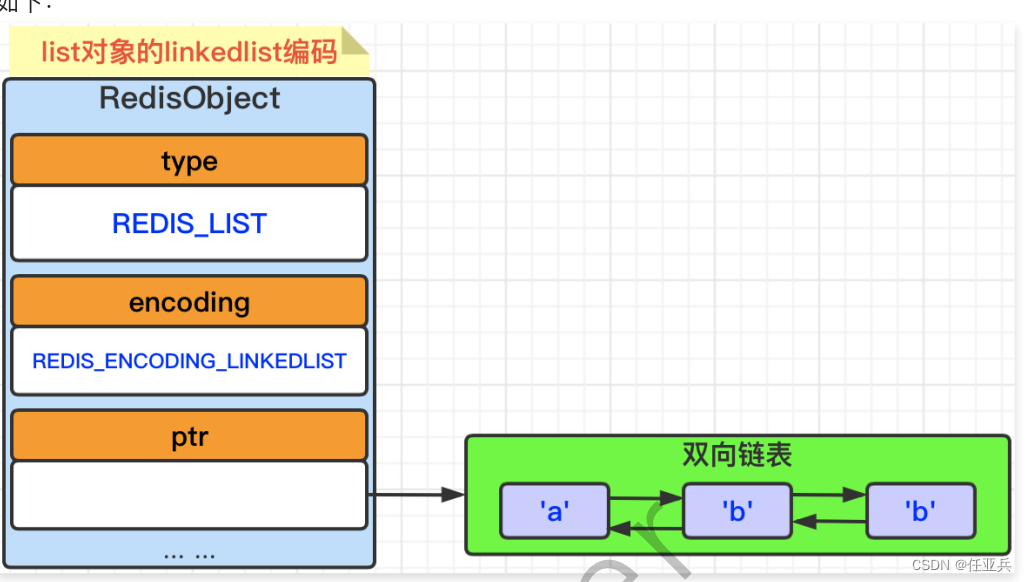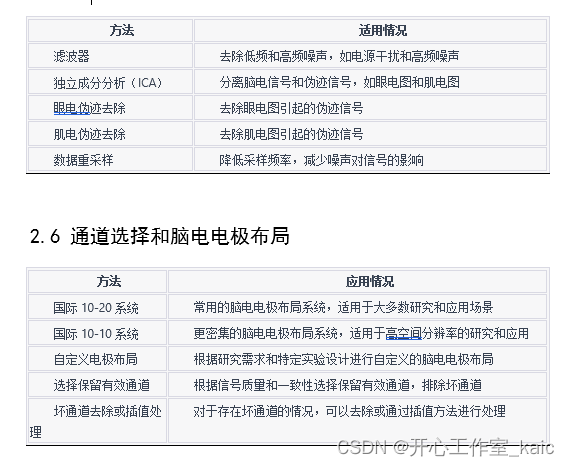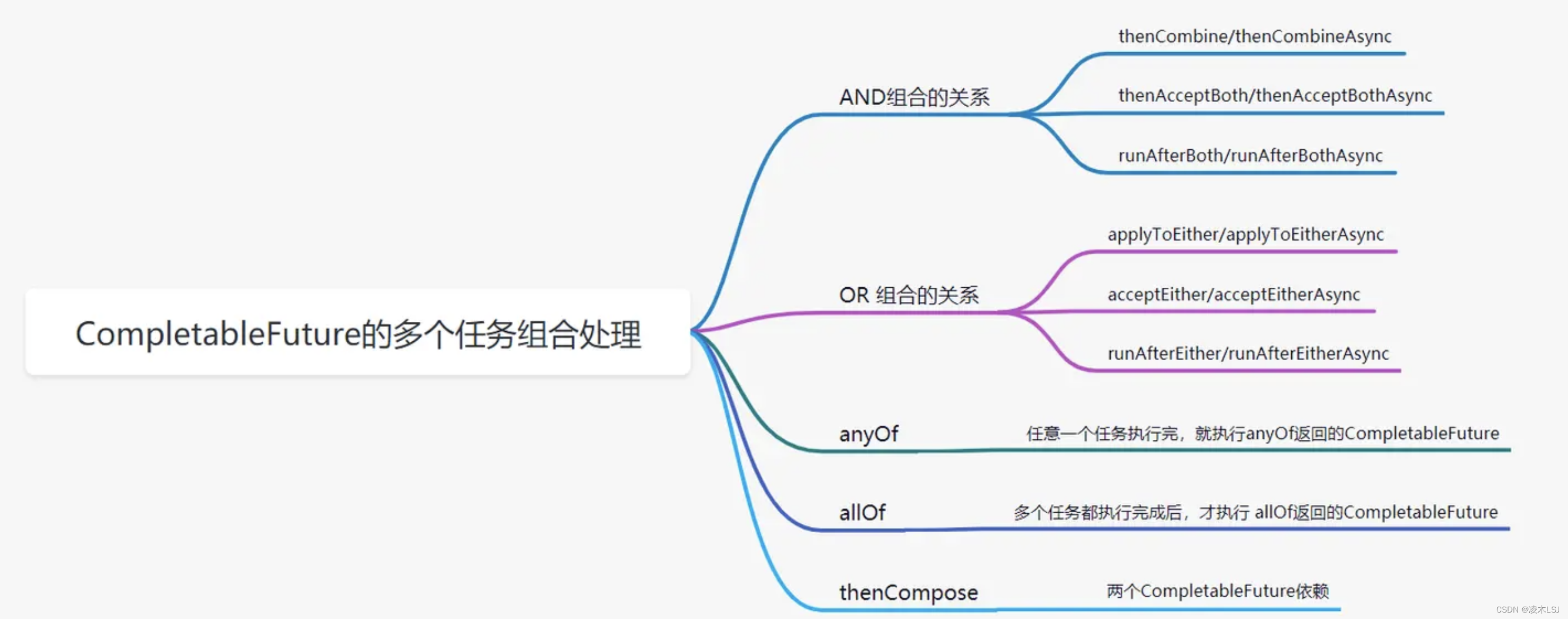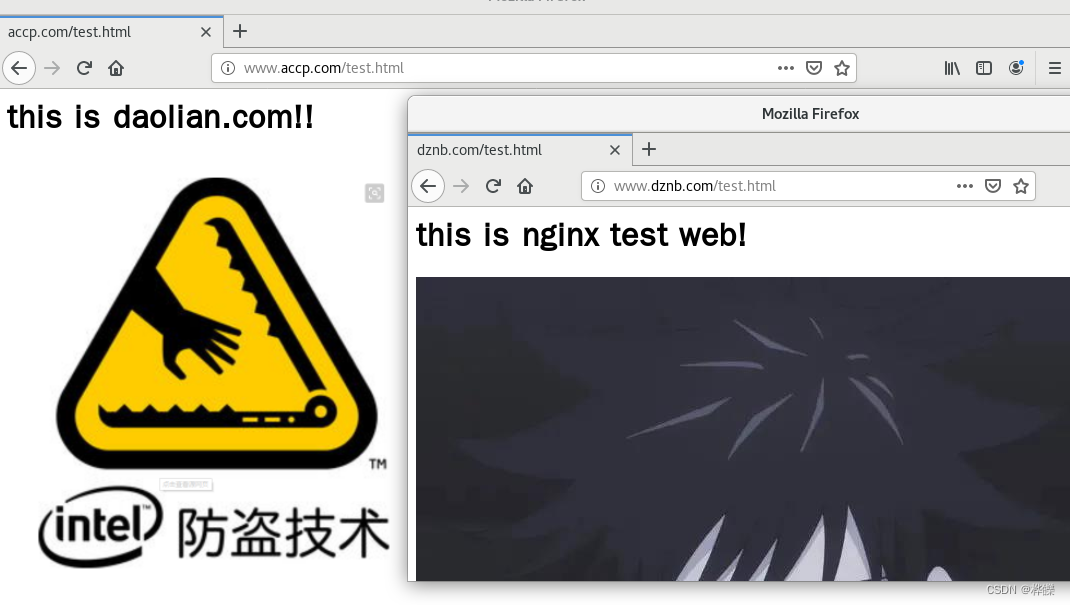目录
一、传统程序开发与控制反转🍭
1、传统程序开发🍉
传统程序开发的缺陷🍓
解决传统开发中的缺陷🍓
2、控制反转思维程序开发🍉
3 对比总结规律🍉
二、Spring创建与使用🍭
1、创建Spring🍉
Ⅰ、创建Maven项目🍓
Ⅱ、添加Spring框架支持🍓
Ⅲ、添加启动类🍓
注意:maven 项目下载 jar 失败的解决方案🍉
Ⅰ、配置好国内的Maven源🍓
配置国内源🍓
Ⅱ、重新下载jar包🍓
Ⅲ、其他问题🍓
2.存储 Bean 对象🍉
Ⅰ、创建Bean🍓
Ⅱ、将 Bean 注册到容器🍓
3.获取并使用Bean 对象🍉
Ⅰ、获取Spring对象🍓
多学一招:ApplicationContext与BeanFactory(常见面试题)
Ⅱ、获取指定的 Bean 对象🍓
Ⅲ、使用Bean对象🍓
多学一招:getBean 方法的更多用法🍉
Ⅰ、根据类型获取 Bean:🍓
Ⅱ、根据名称 + 类型获取 Bean 🍓
两种方法的区别🍓
操作流程图
Spring_冷兮雪的博客-CSDN博客
上期我们讲解了Spring是什么及Spring的核心特点,其中重点讲解了控制反转(IoC)和依赖注入(DI),下面我们通过示例代码来去更深刻了解这其中的含义。
一、传统程序开发与控制反转🍭
1、传统程序开发🍉
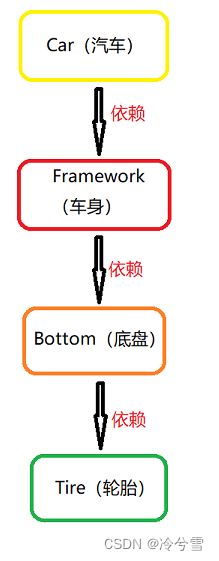
public class NewCarExample {
public static void main(String[] args) {
Car car = new Car();
car.init();
}
/**
* 汽⻋对象
*/
static class Car {
public void init() {
// 依赖⻋身
Framework framework = new Framework();
framework.init();
}
}
/**
* ⻋身类
*/
static class Framework {
public void init() {
// 依赖底盘
Bottom bottom = new Bottom();
bottom.init();
}
}
/**
* 底盘类
*/
static class Bottom {
public void init() {
// 依赖轮胎
Tire tire = new Tire();
tire.init();
}
}
/**
* 轮胎类
*/
static class Tire {
public void init() {
// 尺⼨
int size = 30;
System.out.println("轮胎尺⼨:" + size);
}
}
}
传统程序开发的缺陷🍓
public class NewCarUpdateExample {
public static void main(String[] args) {
Car car = new Car(20);
car.run();
}
/**
* 汽⻋对象
*/
static class Car {
private Framework framework;
public Car(int size) {
framework = new Framework(size);
}
public void run() {
// 依赖⻋身
framework.init();
}
}
/**
* ⻋身类
*/
static class Framework {
private Bottom bottom;
public Framework(int size) {
bottom = new Bottom(size);
}
public void init() {
// 依赖底盘
bottom.init();
}
}
/**
* 底盘类
*/
static class Bottom {
private Tire tire;
public Bottom(int size) {
tire = new Tire(size);
}
public void init() {
// 依赖轮胎
tire.init();
}
}
/**
* 轮胎类
*/
static class Tire {
// 尺⼨
private int size;
public Tire(int size) {
this.size = size;
}
public void init() {
System.out.println("轮胎尺⼨:" + size);
}
}
}
解决传统开发中的缺陷🍓
PS:解耦指的是解决了代码的耦合性,耦合性也可以换⼀种叫法叫程序相关性。好的程序代码的耦合 性(代码之间的相关性)是很低的,也就是代码之间要实现解耦。
2、控制反转思维程序开发🍉
public class IocCarExample {
public static void main(String[] args) {
Tire tire = new Tire(20);
Bottom bottom = new Bottom(tire);
Framework framework = new Framework(bottom);
Car car = new Car(framework);
car.run();
}
static class Car {
private Framework framework;
public Car(Framework framework) {
this.framework = framework;
}
public void run() {
framework.init();
}
}
static class Framework {
private Bottom bottom;
public Framework(Bottom bottom) {
this.bottom = bottom;
}
public void init(){
bottom.init();
}
}
static class Bottom {
private Tire tire;
public Bottom(Tire tire) {
this.tire = tire;
}
public void init() {
tire.init();
}
}
static class Tire {
private int size;
public Tire(int size) {
this.size = size;
}
public void init() {
System.out.println("轮胎:" + size);
}
}
}
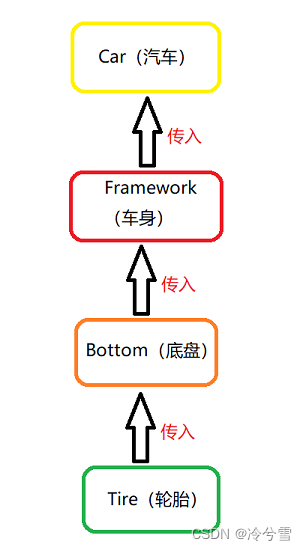
3 对比总结规律🍉
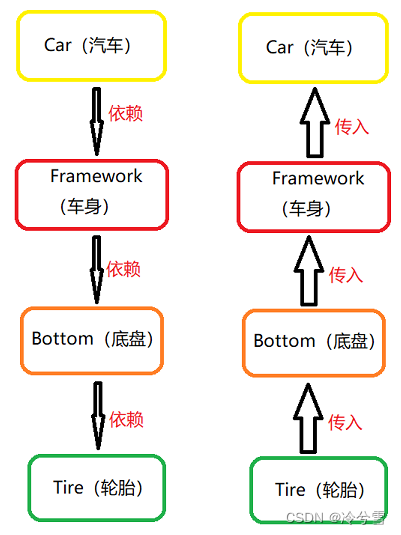
我们理解到了Spring的核心,下面我们来开始写第一个Spring代码。
二、Spring创建与使用🍭
1、创建Spring🍉
下面我们通过Maven ⽅式来创建⼀个 Spring 项⽬,具体可以分为三步:
- 创建⼀个普通 Maven 项⽬。
- 添加 Spring 框架支持(spring-context、spring-beans)。
- 创建一个普通类和main方法运行Spring框架。
Ⅰ、创建Maven项目🍓
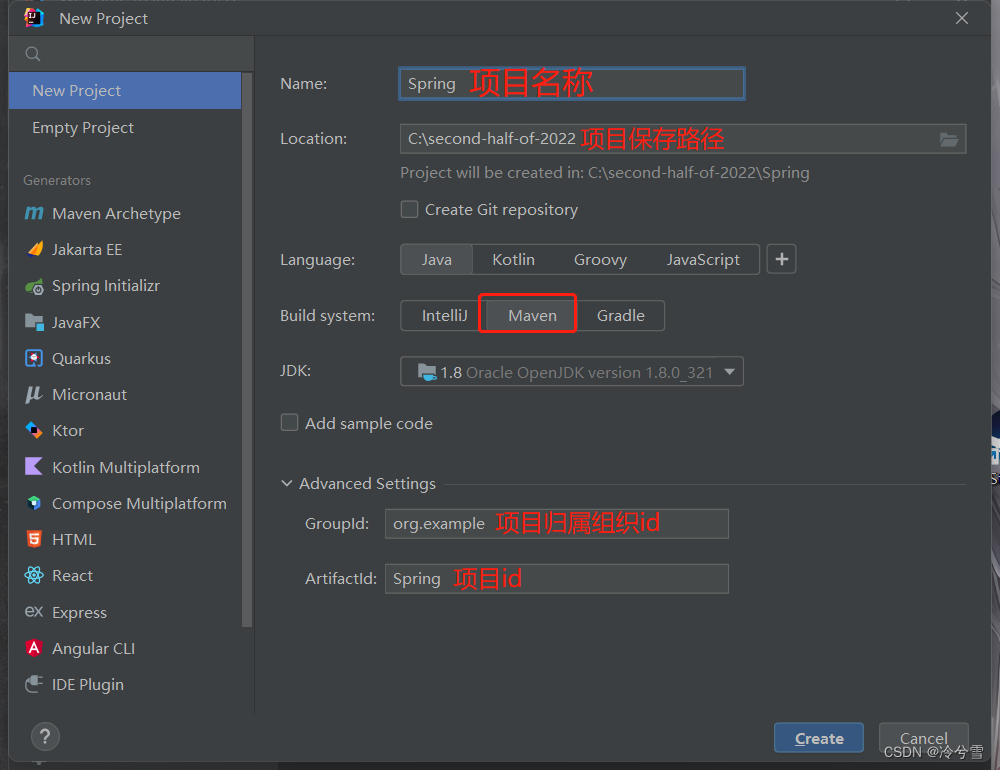
Ⅱ、添加Spring框架支持🍓
创建好了之后,在pom.xml添加 Spring 框架支持
<dependencies>
<dependency>
<groupId>org.springframework</groupId>
<artifactId>spring-context</artifactId>
<version>5.2.3.RELEASE</version>
</dependency>
<dependency>
<groupId>org.springframework</groupId>
<artifactId>spring-beans</artifactId>
<version>5.2.3.RELEASE</version>
</dependency>
</dependencies>添加之后
<?xml version="1.0" encoding="UTF-8"?>
<project xmlns="http://maven.apache.org/POM/4.0.0"
xmlns:xsi="http://www.w3.org/2001/XMLSchema-instance"
xsi:schemaLocation="http://maven.apache.org/POM/4.0.0 http://maven.apache.org/xsd/maven-4.0.0.xsd">
<modelVersion>4.0.0</modelVersion>
<groupId>org.example</groupId>
<artifactId>springdemo</artifactId>
<version>1.0-SNAPSHOT</version>
<properties>
<maven.compiler.source>8</maven.compiler.source>
<maven.compiler.target>8</maven.compiler.target>
</properties>
<dependencies>
<dependency>
<groupId>org.springframework</groupId>
<artifactId>spring-context</artifactId>
<version>5.2.3.RELEASE</version>
</dependency>
<dependency>
<groupId>org.springframework</groupId>
<artifactId>spring-beans</artifactId>
<version>5.2.3.RELEASE</version>
</dependency>
</dependencies>
</project>Ⅲ、添加启动类🍓
public class App {
public static void main(String[] args) {
}
}注意:maven 项目下载 jar 失败的解决方案🍉
Ⅰ、配置好国内的Maven源🍓
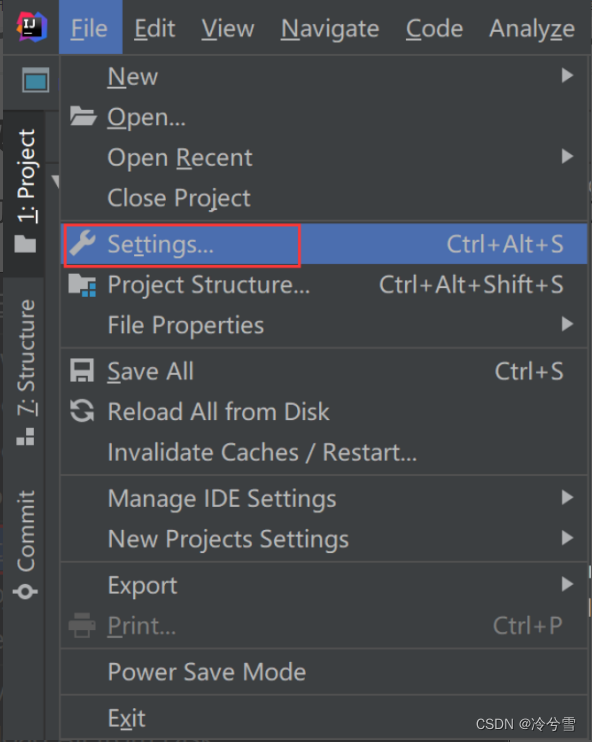
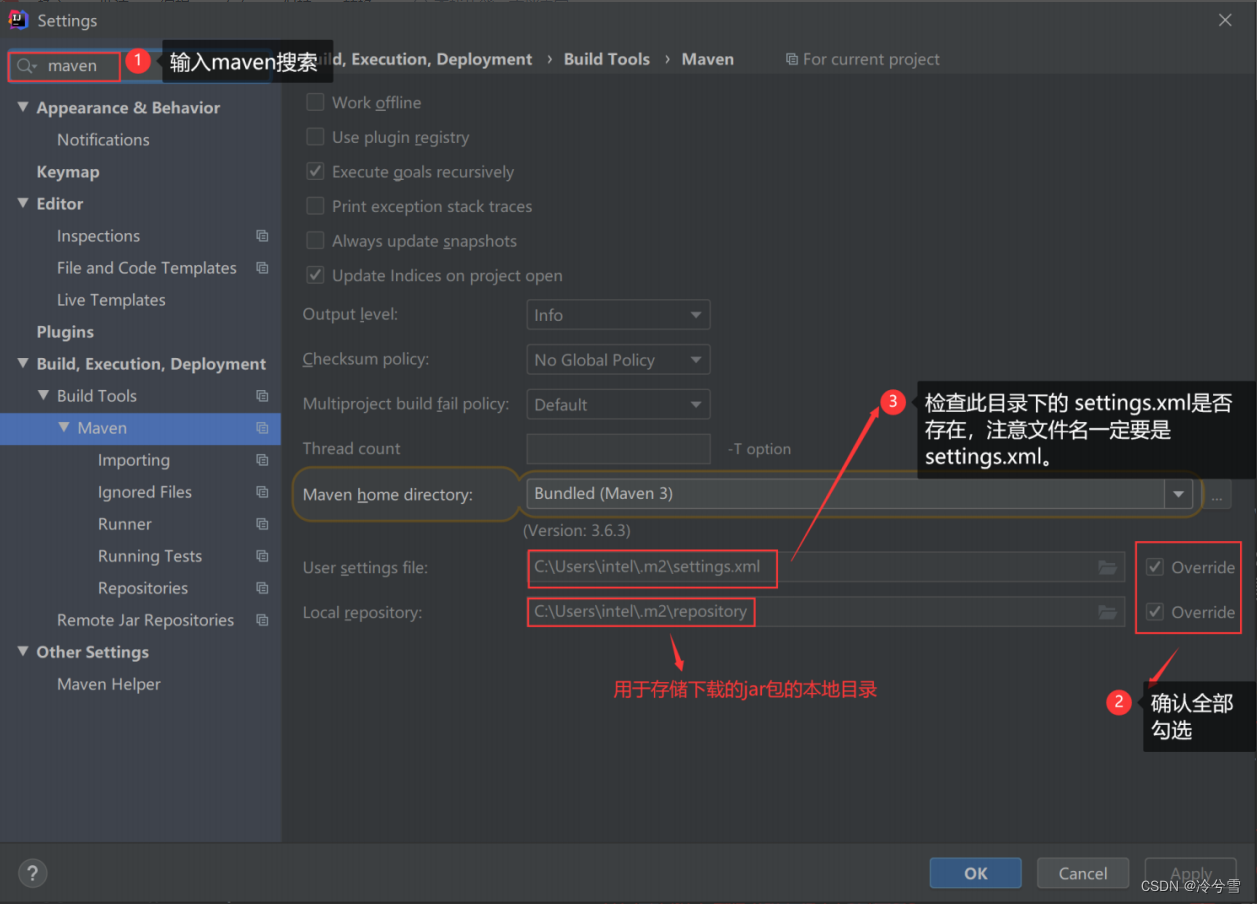
检查项⼀共有两个:
注意:两个路径中都不能出现中文!不能出现中文!不能出现中文!(重要的事说三遍)
配置国内源🍓
可以在Settings->搜索maven中 找到settings.xml ⽂件
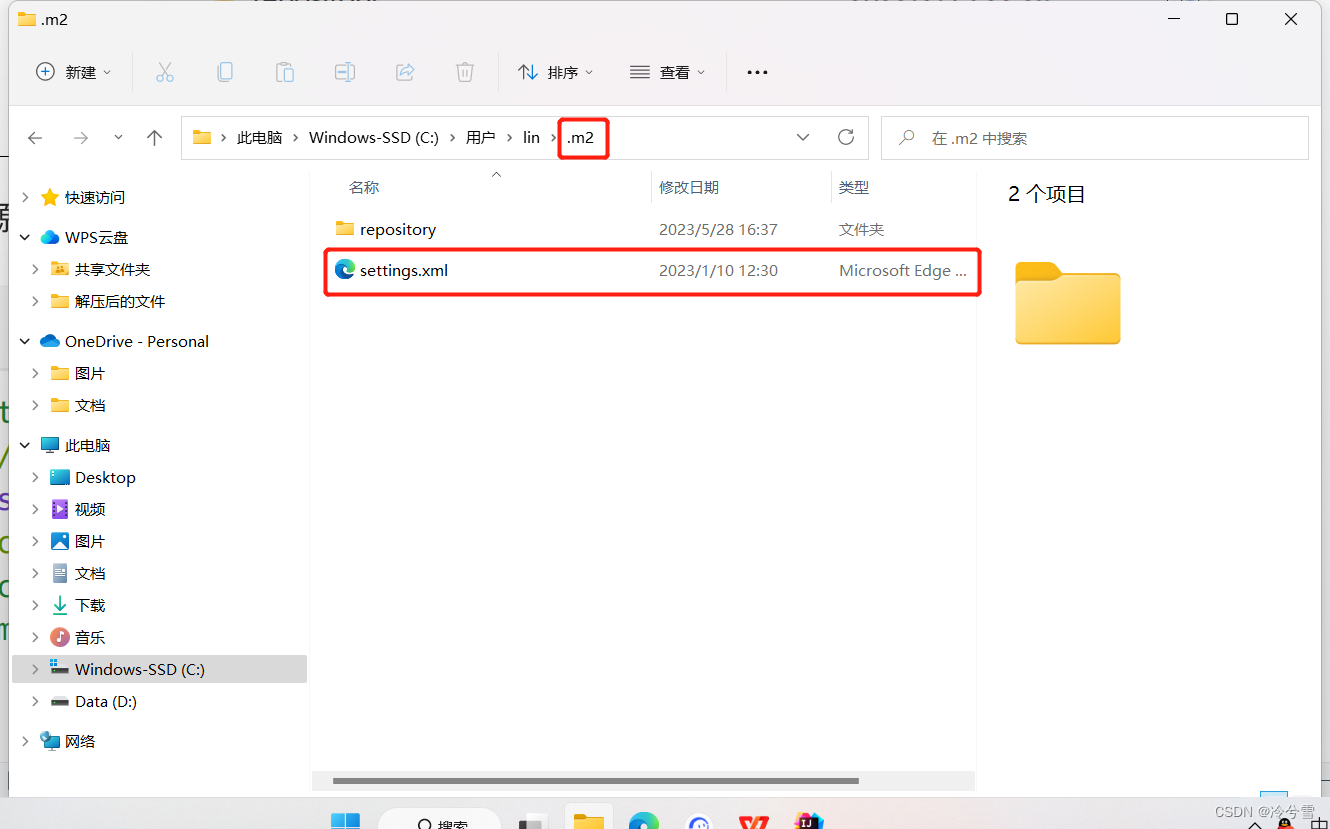
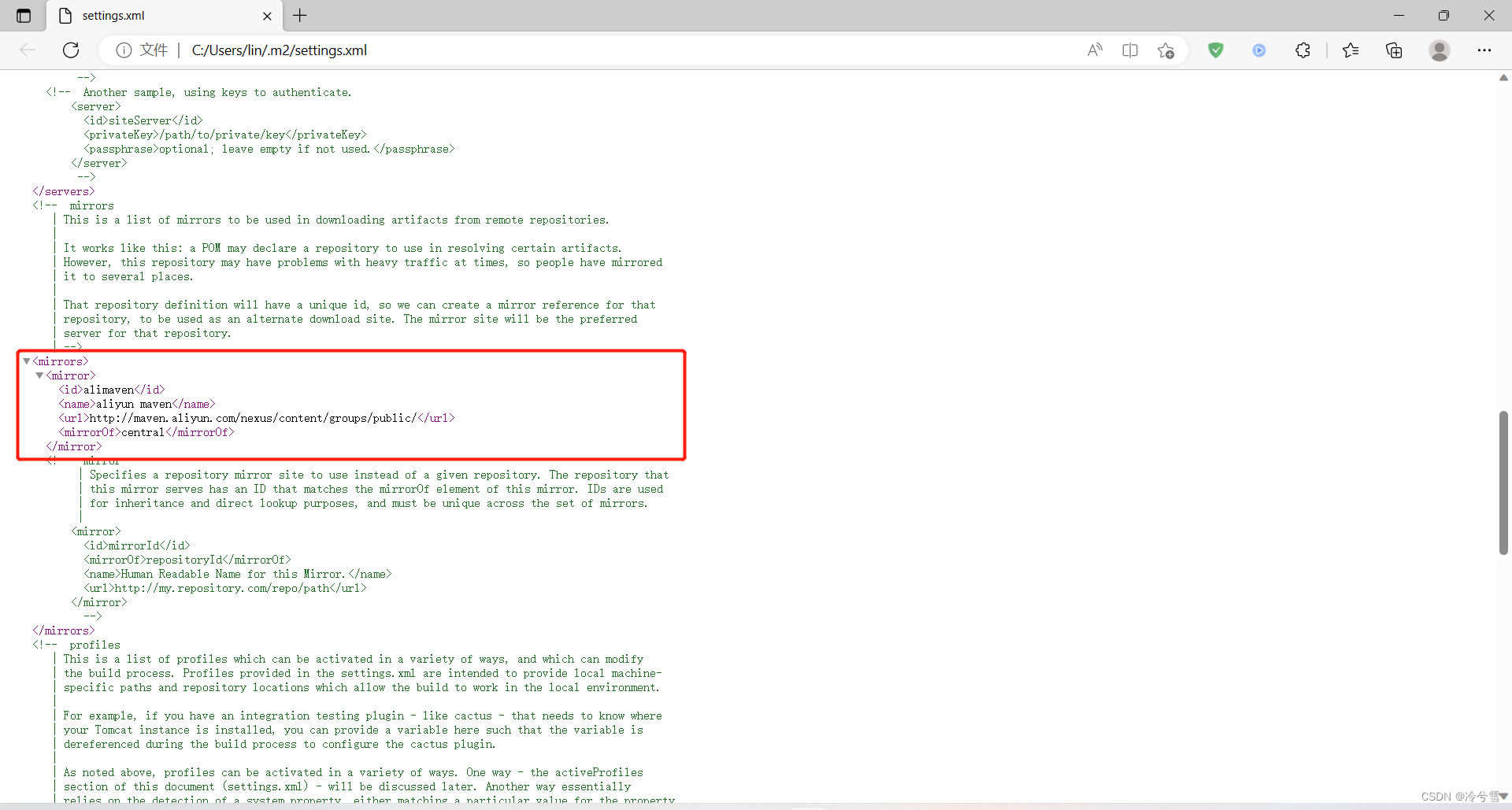
<settings xmlns="http://maven.apache.org/SETTINGS/1.1.0" xmlns:xsi="htt
p://www.w3.org/2001/XMLSchema-instance"
xsi:schemaLocation="http://maven.apache.org/SETTINGS/1.1.0 http://maven.
apache.org/xsd/settings-1.1.0.xsd">
<localRepository>C:\Users\intel\.m2\repository</localRepository>
<mirrors>
<mirror>
<id>alimaven</id>
<name>aliyun maven</name>
<url>http://maven.aliyun.com/nexus/content/groups/public/</url>
<mirrorOf>central</mirrorOf>
</mirror>
</mirrors>
</settings>Ⅱ、重新下载jar包🍓
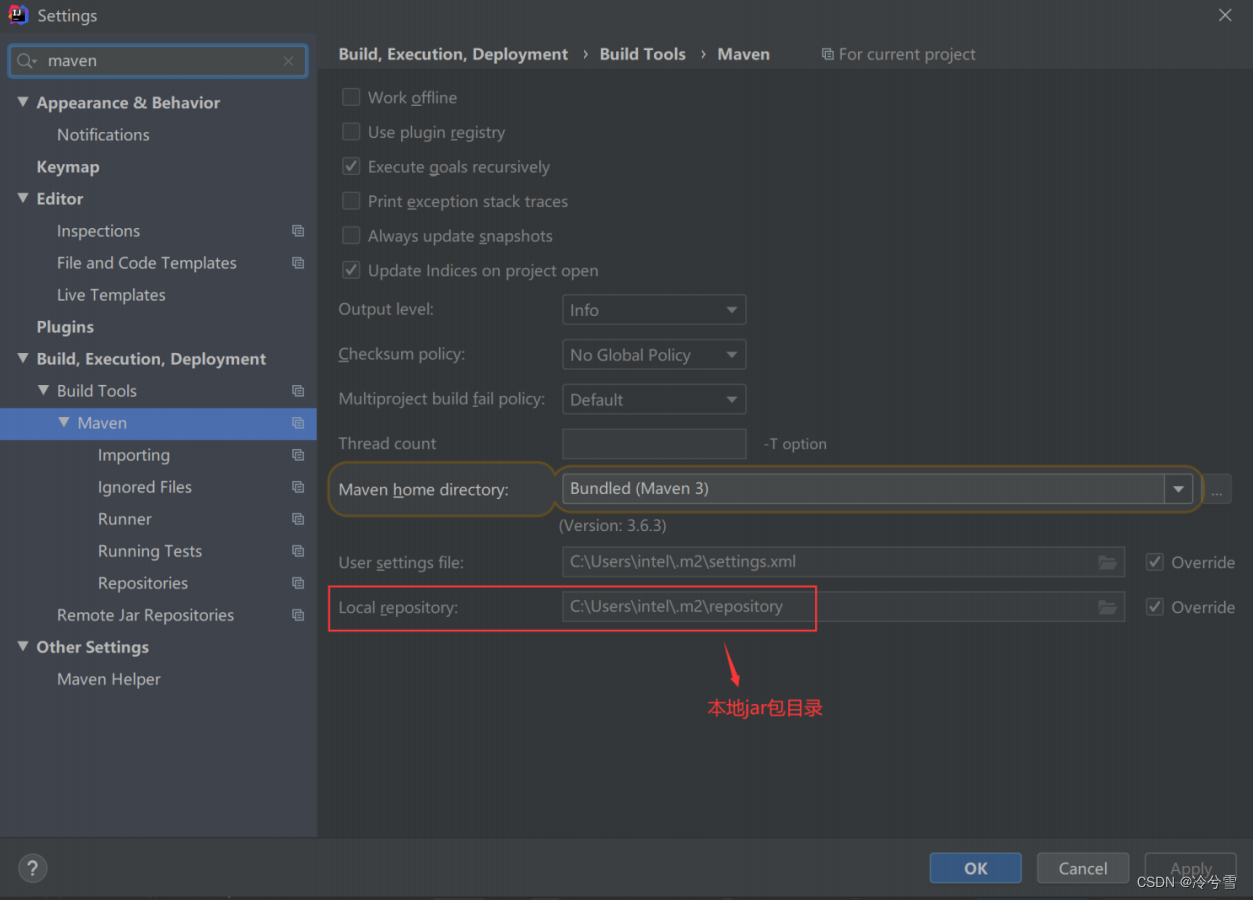
删除本地jar⽬录中的所有⽂件,切换到 Idea 中,重新下载 jar 包,如下图所示

待下载完成,如果还是下载失败那就是本地网速问题,重复步骤 1 和步骤 2 直到下载成功!
Ⅲ、其他问题🍓
- 上⾯的步骤没看仔细,可能遗漏了其中一步;
- Maven 路径中出现中⽂:出现中⽂会 导致下载的jar 包,在项目中不能正常使用;
- 当前网络运营商有问题:当前所在区域连接的网络运营商(中国电信、移动..)连接数据源有问题,尝试更好网络,使用手机热点或朋友的手机热点尝试,如果还是不行,就等三四个小时之后再试。
2.存储 Bean 对象🍉
- 先创建⼀个 Bean。
- 将创建的 Bean 注册到 Spring 容器中。
Ⅰ、创建Bean🍓
public class User {
public String sayHi(String name){
return "hello"+name;
}
}
Ⅱ、将 Bean 注册到容器🍓
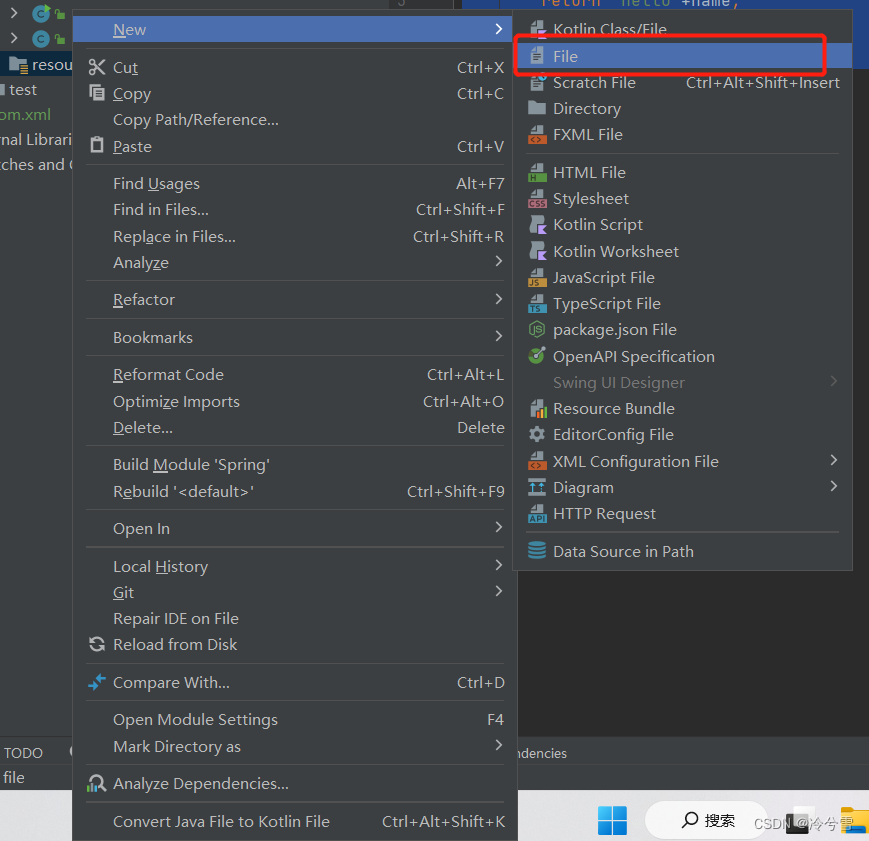
创建之后
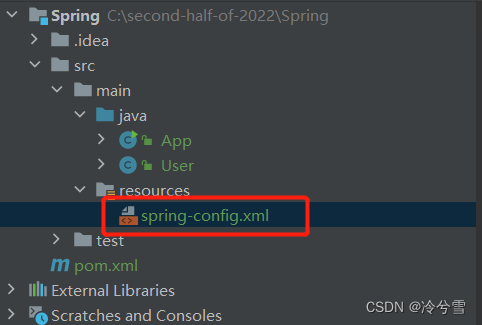
<?xml version="1.0" encoding="UTF-8"?>
<beans xmlns="http://www.springframework.org/schema/beans"
xmlns:xsi="http://www.w3.org/2001/XMLSchema-instance"
xsi:schemaLocation="http://www.springframework.org/schema/beans http://www.springframework.org/schema/beans/spring-beans.xsd">
</beans><bean id="user" class="User"></bean>
3.获取并使用Bean 对象🍉
- 得到 Spring 上下文对象,因为对象都交给 Spring 管理了,所以获取对象要从 Spring 中获取,那么就得先得到 Spring 的上下文。
- 通过Spring 上下文,获取某⼀个指定的 Bean 对象。
- 使用Bean 对象。
Ⅰ、获取Spring对象🍓
ApplicationContext:来自于Spring框架的接口。通过这个接口去获取Spring对象。


多学一招:ApplicationContext与BeanFactory(常见面试题)
BeanFactory是以前的老方法了,现在已经被弃用,或者说现在比较少用了

import org.springframework.beans.factory.BeanFactory;
import org.springframework.beans.factory.xml.XmlBeanFactory;
import org.springframework.context.ApplicationContext;
import org.springframework.context.support.ClassPathXmlApplicationContext;
import org.springframework.core.io.ClassPathResource;
public class App {
public static void main(String[] args) {
//1、获取spring对象
BeanFactory context = new XmlBeanFactory(new ClassPathResource("spring-config.xml"));
//2、从Spring中取出Bean对象 根据名称 + 类型获取 Bean
User user= (User) context.getBean("user",User.class);//输出hello张三
//3、使用Bean(可选)
System.out.println(user.sayHi("张三"));
}
}ApplicationContext VS BeanFactory
相同点:
- 都可以得到 Spring 上下文对象。
- 都是来自 Spring 的接口。
不同点
1、继承关系和功能: 虽然都是Spring 容器的接口,但 ApplicationContext 属于 BeanFactory 的子类 。其中BeanFactory提供了基础的访问容器的能力,ApplicationContext除了继承BeanFactory 的所有功能之外,它还拥有独特的特性,还添加了对国际化支持、资源访问支持、以及事件传播等方面的支持。2、性能:ApplicationContext 是⼀次性加载并初始化所有的 Bean 对象,而BeanFactory 是需要哪个才去加载哪个,因此更加轻量。
Ⅱ、获取指定的 Bean 对象🍓
然后通过getBean方法取出Bean对象
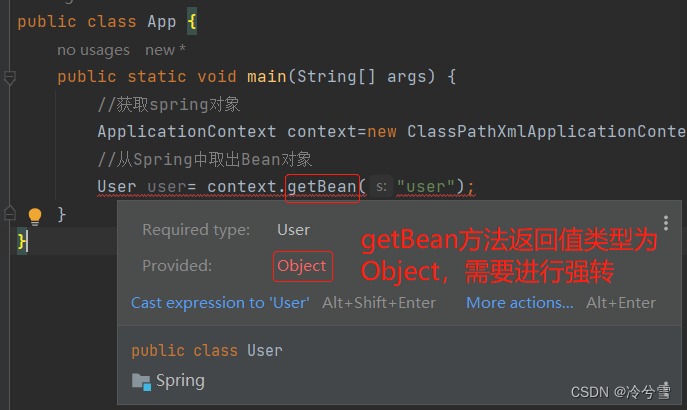
注意:Bean 的 Id 要⼀⼀对应:

Ⅲ、使用Bean对象🍓
我们现在就可以使用Bean,然后调用其中的方法了
import org.springframework.context.ApplicationContext;
import org.springframework.context.support.ClassPathXmlApplicationContext;
public class App {
public static void main(String[] args) {
//1、获取spring对象
ApplicationContext context=new ClassPathXmlApplicationContext("spring-config.xml");
//2、从Spring中取出Bean对象
User user= (User) context.getBean("user");
//3、使用Bean(可选)
System.out.println(user.sayHi("李四"));
}
}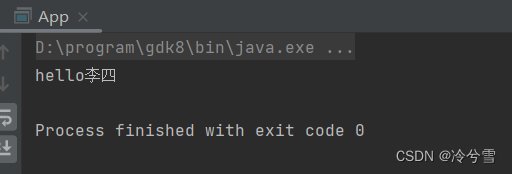
多学一招:getBean 方法的更多用法🍉
Ⅰ、根据类型获取 Bean:🍓
User user= (User) context.getBean(User.class);import org.springframework.context.ApplicationContext;
import org.springframework.context.support.ClassPathXmlApplicationContext;
public class App {
public static void main(String[] args) {
//1、获取spring对象
ApplicationContext context=new ClassPathXmlApplicationContext("spring-config.xml");
//2、从Spring中取出Bean对象 Ⅰ、根据类型获取Bean
User user= (User) context.getBean(User.class);
//3、使用Bean(可选)
System.out.println(user.sayHi("张三"));
}
}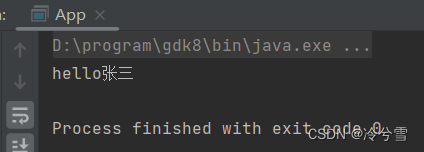
Ⅱ、根据名称 + 类型获取 Bean 🍓
User user= (User) context.getBean("user",User.class);两种方法的区别🍓
当有⼀个类型被重复注册到 spring-config.xml 中时,只能使用 根据名称+类型获取了,比如以下程序
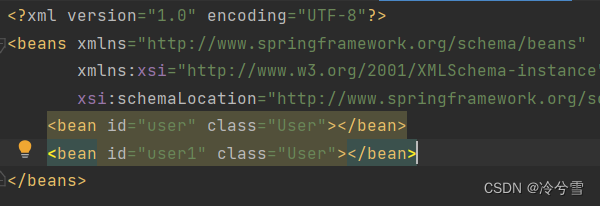
import org.springframework.context.ApplicationContext;
import org.springframework.context.support.ClassPathXmlApplicationContext;
public class App {
public static void main(String[] args) {
//1、获取spring对象
ApplicationContext context=new ClassPathXmlApplicationContext("spring-config.xml");
//2、从Spring中取出Bean对象 Ⅰ、根据类型获取Bean
User user= (User) context.getBean(User.class);//报错
//Ⅱ、根据名称 + 类型获取 Bean
//User user= (User) context.getBean("user",User.class);//输出hello张三
//3、使用Bean(可选)
System.out.println(user.sayHi("张三"));
}
public static void main1(String[] args) {
//1、获取spring对象
ApplicationContext context=new ClassPathXmlApplicationContext("spring-config.xml");
//2、从Spring中取出Bean对象
User user= (User) context.getBean("user");
//3、使用Bean(可选)
System.out.println(user.sayHi("李四"));
}
}
操作流程图




